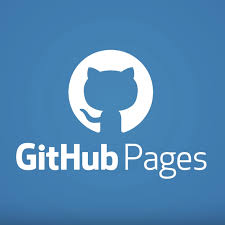Bicep has become a go-to for defining Azure resources with cleaner syntax than ARM templates, but it’s not the only option out there. Depending on your stack, team setup, or how much you want to automate, other tools might fit better. From multi-cloud frameworks to language-based IaC platforms, there’s a growing range of choices that simplify infrastructure provisioning and reduce repetitive configuration work. In this guide, we’ll look at the best Bicep alternatives that help teams stay flexible and move faster without getting buried in YAML or nested JSON.

1. AppFirst
AppFirst offers a practical way for developers to define what their apps need without having to manage infrastructure manually. Instead of writing Terraform or CDK code, teams describe the basic requirements, and the platform provisions everything automatically across AWS, Azure, or GCP. It handles security, observability, and cost tracking as part of the setup, letting teams focus on product work instead of cloud configuration. The system can run as SaaS or be self-hosted, and it includes built-in monitoring, alerting, and auditing. For many teams, it removes the usual friction of setting up infrastructure while keeping compliance and visibility in check.
By handling provisioning, security, and configuration behind the scenes, AppFirst positions itself as a middle ground between traditional IaC and full DevOps automation. Developers can deploy apps quickly, avoid YAML complexity, and standardize infrastructure without maintaining scripts or reviewing infrastructure pull requests. For teams moving fast or working across multiple clouds, it’s a way to simplify provisioning while staying compliant and avoiding internal tooling overhead.
Wichtigste Highlights:
- Automatically provisions secure and compliant infrastructure
- Works across AWS, Azure, and Google Cloud
- Built-in logging, monitoring, and alerting
- Centralized auditing and cost visibility
- SaaS and self-hosted deployment options
Für wen es am besten geeignet ist:
- Teams that want to focus on application code rather than infrastructure
- Developers frustrated by Terraform or YAML workflows
- Companies standardizing infrastructure across multiple clouds
- Organizations with limited or no dedicated DevOps team
Kontaktinformationen:
- Website: www.appfirst.dev
2. Terraform
Terraform by HashiCorp is one of the most established infrastructure-as-code tools, letting users define, provision, and manage infrastructure consistently across multiple providers. It uses a declarative configuration language to describe the desired state of infrastructure, and it handles resource creation, modification, and dependencies automatically. The tool works with low-level elements like compute instances and networks as well as higher-level services such as DNS, SaaS integrations, and Kubernetes clusters.
Terraform has a large provider ecosystem and fits into almost any workflow that involves infrastructure automation. Teams can use it for multi-cloud setups, CI/CD pipelines, or hybrid environments. It’s not limited to a single platform and can manage AWS, Azure, GCP, Oracle Cloud, and more from one configuration base. The workflow supports versioning, collaboration, and change tracking, which makes it a solid choice for teams that want predictable, reproducible infrastructure management.
Wichtigste Highlights:
- Declarative configuration for defining infrastructure as code
- Broad provider support across major clouds and platforms
- State management and change tracking for predictable updates
- Supports modular and reusable configurations
- Open source with an active community and enterprise versions available
Für wen es am besten geeignet ist:
- Teams working in multi-cloud or hybrid environments
- DevOps engineers looking for consistent, version-controlled infrastructure management
- Organizations that prefer declarative IaC over imperative scripting
- Companies building complex cloud environments that require automation at scale
Kontaktinformationen:
- Website: www.hashicorp.com
- E-mail: support@hashicorp.com
- Facebook: www.facebook.com/HashiCorp
- Twitter: x.com/hashicorp
- LinkedIn: www.linkedin.com/company/hashicorp

3. Pulumi
Pulumi takes a different approach to infrastructure as code by allowing developers to use real programming languages like Python, TypeScript, Go, C#, and Java instead of a domain-specific configuration language. This makes it easier to integrate infrastructure code with application logic and reuse standard programming concepts like loops, functions, and modules. Pulumi supports all major cloud providers and works well for both developers and operations teams who want flexibility in how they define and automate infrastructure.
The platform includes additional tools for secrets management, policy enforcement, and AI-assisted automation. With Pulumi, teams can manage resources through reusable code, test configurations as part of development workflows, and control everything from a single interface. It’s designed for engineers who want to treat infrastructure as part of their software development process while maintaining visibility and governance.
Wichtigste Highlights:
- Write infrastructure in TypeScript, Python, Go, C#, Java, or YAML
- Built-in policy governance and secrets management
- Integrates with major cloud platforms and Kubernetes
- Offers AI features for automation and troubleshooting
- Provides both open-source and managed cloud options
Für wen es am besten geeignet ist:
- Developers who prefer writing infrastructure in familiar programming languages
- Teams integrating IaC directly into software projects
- Organizations looking for cross-cloud consistency and governance
- Companies that value automation and integrated security controls
Kontaktinformationen:
- Website: www.pulumi.com
- Twitter: x.com/pulumicorp
- LinkedIn: www.linkedin.com/company/pulumi
- Address: 601 Union St., Suite 1415 Seattle, WA 98101

4. OpenTofu
OpenTofu is an open-source infrastructure-as-code tool that emerged as a community-driven alternative to Terraform. It keeps the familiar workflow and configuration format but removes the licensing restrictions introduced by Terraform’s newer terms. This means teams using Terraform can switch to OpenTofu without rewriting their existing code or rethinking their setup. The tool runs under the Linux Foundation and maintains compatibility with thousands of existing providers and modules, so users can manage cloud infrastructure across AWS, Azure, and other platforms with the same approach they already know.
Beyond the basics, OpenTofu introduces its own set of improvements like selective resource exclusion, early variable evaluation, provider iteration, and built-in state encryption. These features help developers manage multi-region or multi-environment setups more efficiently while keeping security and consistency in check. The project’s direction is shaped by the community, and it stays focused on transparency and flexibility, making it a practical choice for anyone who wants open governance in their infrastructure automation stack.
Wichtigste Highlights:
- Fully open-source under the Linux Foundation
- Drop-in compatible with existing Terraform workflows
- Supports thousands of providers and modules
- Offers new features like resource exclusion and state encryption
- Strong community involvement and transparent governance
Für wen es am besten geeignet ist:
- Teams moving away from Terraform’s proprietary model
- Organizations seeking open governance and community support
- Developers managing multi-cloud or hybrid environments
- Engineers needing compatibility with existing IaC workflows
Kontaktinformationen:
- Website: opentofu.org
- Twitter: x.com/opentofuorg

5. ARM Templates
Azure Resource Manager (ARM) Templates provide a declarative way to define and deploy infrastructure within Microsoft Azure. Each template uses JSON syntax to describe what resources to create, configure, and connect, without requiring users to specify procedural commands. It’s an approach designed for consistency and repeatability – teams can version templates, store them alongside application code, and deploy the same setup multiple times with identical results. ARM Templates integrate tightly with Azure’s native services, supporting everything from virtual machines and storage accounts to network and policy configurations.
They also handle orchestration automatically, ensuring resources deploy in the correct order while enabling parallel deployment when possible. Developers can modularize templates into reusable components, add validation or deployment scripts, and preview changes before applying them. ARM Templates are fully integrated with Azure DevOps, allowing continuous delivery pipelines and policy enforcement through Azure Policy. Although Bicep was introduced as a more readable alternative, ARM Templates remain a reliable and mature foundation for managing Azure infrastructure at scale.
Wichtigste Highlights:
- Declarative JSON-based syntax for defining Azure resources
- Supports orchestration and parallel deployment automatically
- Enables modular and reusable infrastructure definitions
- Integrates with Azure DevOps for CI/CD and policy enforcement
- Provides validation, preview, and deployment tracking in Azure Portal
Für wen es am besten geeignet ist:
- Teams already working within Azure’s native ecosystem
- Developers who prefer declarative IaC in JSON format
- Enterprises using Azure Policy or governance frameworks
- Organizations maintaining legacy templates alongside Bicep
Kontaktinformationen:
- Website: microsoft.com
- Facebook: www.facebook.com/Microsoft
- Twitter: x.com/microsoft
- LinkedIn: www.linkedin.com/company/microsoft
6. Ansible
Ansible is an open-source automation tool that simplifies configuration management, provisioning, and application deployment. Instead of writing scripts or complex templates, users define their infrastructure in human-readable YAML files known as playbooks. It connects to systems over SSH or APIs, executing tasks directly without needing agents installed on remote machines. This makes it particularly flexible for managing hybrid environments that mix cloud, on-premises, and container-based setups.
Within cloud platforms like Azure, Ansible provides modules that handle provisioning, scaling, and application orchestration. Teams can automate deployment of virtual machines, manage containers, and integrate microservices while maintaining compliance and consistency. It’s widely adopted for managing both infrastructure and application layers, making it a solid choice for those who want infrastructure automation without diving deep into domain-specific languages.
Wichtigste Highlights:
- Open-source and agentless automation framework
- Uses YAML playbooks for clear, readable configurations
- Broad module ecosystem covering major clouds and on-premises systems
- Supports Azure, AWS, and Kubernetes integrations
- Enables both configuration management and provisioning in one workflow
Für wen es am besten geeignet ist:
- Teams looking for simple, agentless automation
- Organizations managing mixed or hybrid environments
- Developers who prefer YAML-based workflows over JSON or DSLs
- IT teams automating both infrastructure and application deployments
Kontaktinformationen:
- Website: www.redhat.com
- E-Mail: cs-americas@redhat.com
- Facebook: www.facebook.com/RedHat
- Twitter: x.com/RedHat
- LinkedIn: www.linkedin.com/company/red-hat
- Telefon: +1 919 301 3003

7. Farmer
Farmer is a lightweight infrastructure-as-code library designed to simplify Azure deployments through a clean, strongly-typed DSL built on .NET. Instead of writing long JSON templates, developers describe Azure resources using readable F# code, which Farmer then translates into standard ARM templates behind the scenes. This makes it easier to define, manage, and reuse infrastructure without worrying about syntax errors or missing dependencies. Since it runs on .NET Core, it works consistently across Windows, macOS, and Linux, giving teams flexibility in how and where they deploy.
What sets Farmer apart is its focus on readability and safety. The language is statically typed, so resource definitions are verified at compile time, reducing errors before deployment. It integrates directly with existing Azure Resource Manager (ARM) processes and remains compatible with standard ARM templates, making migration straightforward for teams already using Azure. By offering a smaller, clearer codebase and a pragmatic syntax, Farmer helps developers build and modify infrastructure faster without diving deep into complex JSON structures.
Wichtigste Highlights:
- Strongly-typed F# DSL for defining Azure infrastructure
- Generates standard ARM templates automatically
- Works across Windows, macOS, and Linux with .NET Core
- Backward compatible with existing ARM workflows
- Simplifies deployment with safer, shorter code
Für wen es am besten geeignet ist:
- Developers already working in Azure who want cleaner IaC syntax
- Teams using ARM templates looking for a simpler authoring method
- Engineers familiar with .NET and F# ecosystems
- Organizations seeking repeatable, idempotent deployments
Kontaktinformationen:
- Website: github.io
- Instagram: www.instagram.com/github
- LinkedIn: www.linkedin.com/company/github
- Twitter: x.com/github

8. Crossplane
Crossplane is an open-source control plane framework built on Kubernetes, designed to help platform teams manage infrastructure and application resources through declarative APIs. Instead of defining infrastructure in templates or scripts, Crossplane allows engineers to build their own control planes that expose APIs tailored to their specific needs. It extends Kubernetes beyond containers, managing everything from databases and VMs to multi-cloud services while maintaining a consistent orchestration model.
By leveraging Kubernetes’ foundation, Crossplane inherits strong features like role-based access control, security, and reconciliation loops. Teams can use existing providers or create custom ones to fit unique infrastructure patterns. The framework promotes the idea of building internal developer platforms, where infrastructure can be self-serviced through APIs without requiring deep expertise in cloud configuration. It’s designed for organizations that want to unify management across environments while staying open and flexible.
Wichtigste Highlights:
- Built on Kubernetes to manage any resource via custom APIs
- Supports multi-cloud infrastructure orchestration
- Extensible through providers and configuration packages
- Leverages Kubernetes RBAC and reconciliation model
- Open-source and community-driven under the CNCF
Für wen es am besten geeignet ist:
- Platform engineering teams building internal developer platforms
- Organizations already using Kubernetes for operations
- Developers managing multi-cloud environments
- Teams seeking unified API-driven infrastructure management
Kontaktinformationen:
- Website: www.crossplane.io
- Twitter: x.com/crossplane_io
- LinkedIn: www.linkedin.com/company/crossplane
Einpacken
Choosing between Bicep and its alternatives really comes down to how your team prefers to work with infrastructure. Some developers like the simplicity and Azure-native focus of Bicep, while others need tools that fit broader ecosystems or programming styles. Tools like Farmer keep things inside the .NET world but make Azure deployments far easier to reason about. NUKE turns automation into clean, testable C# code that’s actually fun to maintain. And Crossplane steps further into platform engineering, giving teams full control to define their own APIs and infrastructure workflows across clouds.
In the end, there isn’t one “right” choice here. Each tool solves a different pain point depending on whether you want tighter Azure integration, more flexibility, or a code-first approach to automation. What matters is picking something your developers will actually enjoy using, because the best infrastructure setup is the one your team won’t dread maintaining six months from now.


